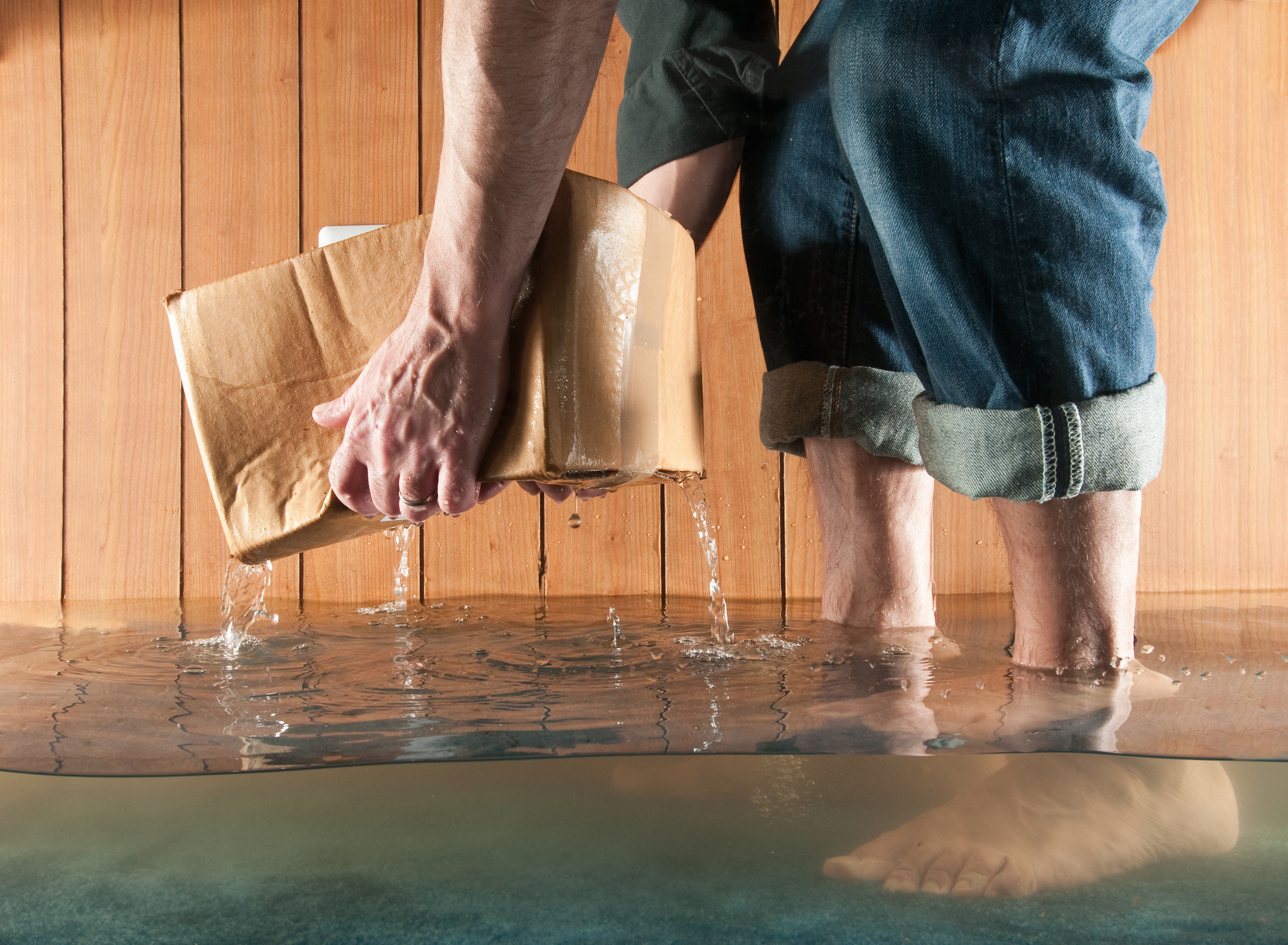What Does the Term 'Full Coverage' Really Mean in Insurance?
For starters, there’s no such thing as 'full coverage.' Instead, you should tell your insurer exactly what kind of protection you're looking for and for what.

Do you have car insurance? What about home insurance? Do you have an insurance policy of any kind? Chances are you do, and if I asked you if it is good coverage, bad coverage or something in between, you would say words to the effect of you have “full coverage.” If you believe you have the always sought-after and rarely found “full coverage,” read on.
When you purchase an insurance policy, whether you speak with a licensed agent or broker or call an insurer directly, you have choices on what it is you are going to buy. You probably have an idea of what you want to pay more than what it is you are going to buy. Because of this, you may find yourself asking for full coverage. The problem is, there really is no such thing as full coverage. Let me explain why, and let’s start with an analogy.
A drive-through analogy
You’re hungry. You’ve been working a long, hard day, both brain and muscles tiring, and you didn’t have a chance to even take a break for lunch. Come to think of it, you don’t remember if you had anything for breakfast other than a double espresso. Bottom line, you are one hungry person.

Sign up for Kiplinger’s Free E-Newsletters
Profit and prosper with the best of expert advice on investing, taxes, retirement, personal finance and more - straight to your e-mail.
Profit and prosper with the best of expert advice - straight to your e-mail.
You stop at the first drive-through you can find and are greeted by the tinny and echoing voice of someone welcoming you and asking how they can help you. You tell the faceless voice, “I’m hungry. I want food so I am not hungry anymore.” If you go that route, you may be in for an audible chuckle from the drive-through speaker, or at the very least an inquisitive follow-up.
How many ways are there at this restaurant to make you “not hungry”? Hamburgers, fries, milkshakes, chicken sandwiches, onion rings, drinks — the sky’s the limit. Also, with each of those options, how much will it take to really fill you up? Everyone is different — you may need a double patty, whereas someone else may need just a small fry and half a chicken sandwich.
Thirsty? Does hunger encompass thirst? When you say you don’t want to be hungry, does that also mean you don’t want to be thirsty? How long will whatever you get keep you full — do you want to be “not hungry” for only an hour or for the rest of the day?
Pretty quickly, you can see you are going to have to provide significantly more information about your fast-food order before anything is going to appear in the window for you. How much food, what kind of food, to have a soda or not — just in those few items, there are potentially hundreds of combinations that could theoretically make you “not hungry.” But what are you really looking for? And, as important, what are you thinking you paid for and received?
How this relates to insurance
Asking for “full coverage” while shopping for insurance truly is as ambiguous as going to a fast-food drive-through and saying you are hungry and don’t want to be. The variations of solutions are incredibly more complicated than we realize. The only real difference is this: You can tell the drive-through employee precisely what it is you want, and you (hopefully) get it, nothing more and nothing less. If you are still hungry, that’s on you, not the restaurant.
When you ask an insurer for “full coverage,” you may have one idea of what that is, and the company has another. And guess what? The consequences of you not getting what you expected are much more dire than you having a growling tummy.
Here are five tips on how to help order your insurance policy rather than asking for something and hoping the insurance agent or broker will get it right. You can also see the tips in this video:
- Explain in detail what it is you want to insure. You can’t simply say “my car” and expect to get an accurate proposal. You have to provide the make and model, vehicle ID number (VIN), your driver’s license — details, details, details.
- Make clear the type of protection you want. Protection against fire, theft, water damage?
- Do not base a new policy on your most recent policy. You don’t want a previous poor decision to follow you indefinitely on every future insurance policy. Ask for an apples-to-apples comparison.
- Tell them what isn’t important to you. If all you really care about is to have protection from a lawsuit, say so. Liability limits for such things start at $1 and go into the tens of millions of dollars. You’re in there somewhere.
- Let them know how much loss you can personally absorb. If you have the money, ask for a higher deductible and pay for the losses out of your own pocket while saving on your insurance premium. The more you take on yourself, the less your insurance premium will be.
At the end of the day, you are the one who wants insurance protection. Who better than you can provide the specifics of what it is you want? Spoiler alert: Nobody knows better than you what you want or what you mean.
Related Content
Get Kiplinger Today newsletter — free
Profit and prosper with the best of Kiplinger's advice on investing, taxes, retirement, personal finance and much more. Delivered daily. Enter your email in the box and click Sign Me Up.

Karl Susman is an insurance agency owner, insurance expert witness in state, federal and criminal courts, and radio talk show host. For more than 30 years, Karl has helped consumers understand the complex world of insurance. He provides actionable advice and distills complex insurance concepts into understandable options. He appears regularly in the media, offering commentary and analysis of insurance industry news, and advises lawmakers on legislation, programs and policies.
-
 Customer Services are Strained at the SSA, You Should Plan Around These Federal Holidays
Customer Services are Strained at the SSA, You Should Plan Around These Federal HolidaysIf you have a question or need information from a federal agency, check the federal holiday schedule to make sure you get your business done before they close.
By Donna LeValley
-
 Stock Market Today: No 'Powell Put'? No Problem
Stock Market Today: No 'Powell Put'? No ProblemInvestors, traders and speculators look beyond both another Trump post and more signs of slowing economic activity.
By David Dittman
-
 Stock Market Today: No 'Powell Put'? No Problem
Stock Market Today: No 'Powell Put'? No ProblemInvestors, traders and speculators look beyond both another Trump post and more signs of slowing economic activity.
By David Dittman
-
 Don’t Get Burned: Six Summer Disasters Your Home Insurance Might Not Cover
Don’t Get Burned: Six Summer Disasters Your Home Insurance Might Not CoverHome insurance doesn’t cover everything. Learn which disasters require extra coverage — and how to protect your home before it’s too late.
By Jacob Wolinsky
-
 How to Store Your Financial Documents the Right Way
How to Store Your Financial Documents the Right WayHaving mountains of financial paperwork take over your home can be frustrating. Here's how to get the mess under control while still having your essential information at your fingertips.
By Laura Gariepy
-
 First 100 Days: Trump's Impact on Your Finances
First 100 Days: Trump's Impact on Your FinancesHere are some opportunities to consider regarding investing, interest rates and tax cuts as the financial landscape shifts under the new administration.
By Daniel Razvi, Esquire
-
 What Would Happen if You Put Your Tax Refund in an IRA?
What Would Happen if You Put Your Tax Refund in an IRA?Not only could you get a tax break, but the compounding effect over 35 years could turn the average refund into nearly $14,000.
By Romi Savova
-
 Children Can't Afford to Fly the Nest? Here's How to Help
Children Can't Afford to Fly the Nest? Here's How to HelpThe high cost of living means more adult children are staying at home. Here are four ways to help financially so they can eventually spread their wings.
By Kelli Kiemle, AIF®
-
 How Much Will Car Prices Go Up With Tariffs?
How Much Will Car Prices Go Up With Tariffs?Tariffs could drive car prices up even higher, for new and used cars, as well as for American brands.
By Jim Patterson
-
 What Is the Buffett Indicator?
What Is the Buffett Indicator?"It is better to be roughly right than precisely wrong," writes Carveth Read in "Logic: Deductive and Inductive." That's the premise of the Buffett Indicator.
By Charles Lewis Sizemore, CFA
